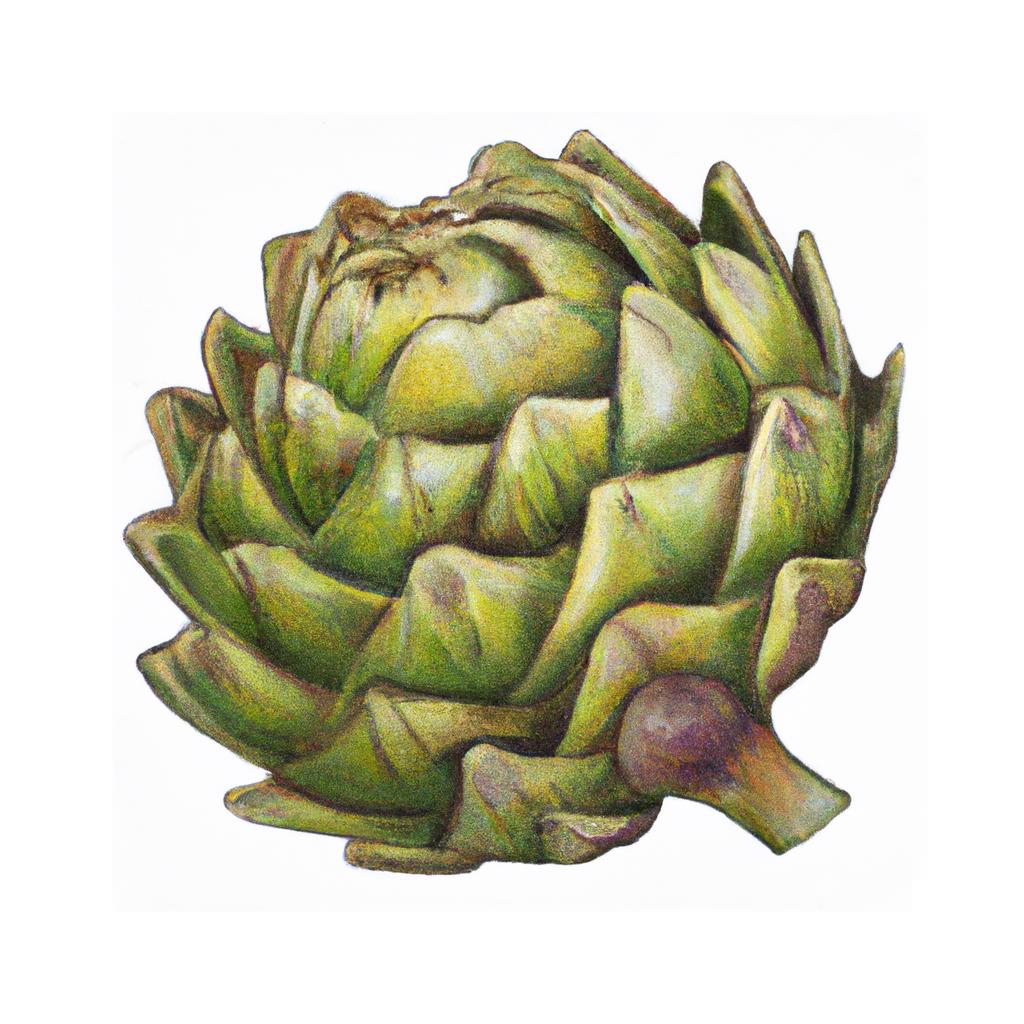
Globe artichoke, also known as Cynara scolymus or French artichoke, is a perennial plant native to the Mediterranean region. The distinctive-looking vegetable is revered for its unique appearance, featuring large, spiky, silver-green leaves and bright purple flowers. Interestingly, the part of the plant that we eat, called the 'artichoke heart,' is actually the immature flower bud.
The globe artichoke boasts an extensive history, dating back to ancient Greek and Roman times. Its cultivation can be traced to Pliny the Elder's description of Cynara in the 1st century AD. In these early cultures, the artichoke was prized for its medicinal properties and rumored aphrodisiac qualities. It became more widely cultivated during the Renaissance period and was introduced to England and America in the 16th and 19th century, respectively.
Globe artichokes are rich in antioxidants, vitamins, and minerals, including vitamin C, potassium, and magnesium. They are low in calories and high in fiber, which contributes to a healthy digestive system. Additionally, they contain cynarin, a compound that aids liver function and stimulates the production of bile, thereby supporting digestion.
When it comes to culinary applications, globe artichokes are extremely versatile. They can be boiled, steamed, grilled, or even roasted. The leaves are typically dipped in sauces like aioli or melted butter, while the tender heart can be sliced and added to salads or pasta dishes. Furthermore, globe artichokes pair well with flavors like lemon, garlic, and Parmesan cheese, making them a popular ingredient in Mediterranean cuisine.
This is advice is most applicable to growers in the UK, you may need to adjust the timings if you live somewhere with a different climate and/or seasons.
| Month | Tasks | Advice |
|---|---|---|
| January | sow, | Sow globe artichoke seeds indoors in seed trays at a depth of 1-2 cm. Maintain a temperature between 15-18°C (60-65°F). |
| February | sow, | Continue sowing globe artichoke seeds indoors at 1-2 cm depth. Keep them in a warm and well-lit area. |
| March | plant out, | Transplant young globe artichoke seedlings outdoors. Choose a sunny location and space them around 1 metre apart. |
| April | sow, plant out, | Sow globe artichoke seeds directly outdoors in well-drained soil, 1-2 cm deep, or transplant seedlings from earlier sowings. |
| May | plant out, | Continue transplanting young globe artichoke seedlings to their final locations, ensuring they have enough space to grow. |
| June | harvest, | Begin harvesting globe artichokes when the buds are tight and firm, cutting them from the plant with a sharp knife. |
| July | harvest, | Continue harvesting globe artichokes while the buds are still firm. Regularly check for new growth. |
| August | harvest, | Harvest any remaining mature globe artichoke buds. Cut back spent flowering stems to encourage new growth. |
| September | - | - |
| October | - | - |
| November | - | - |
| December | - | - |